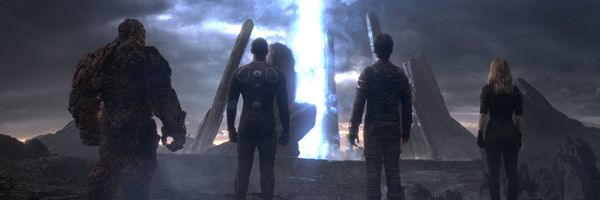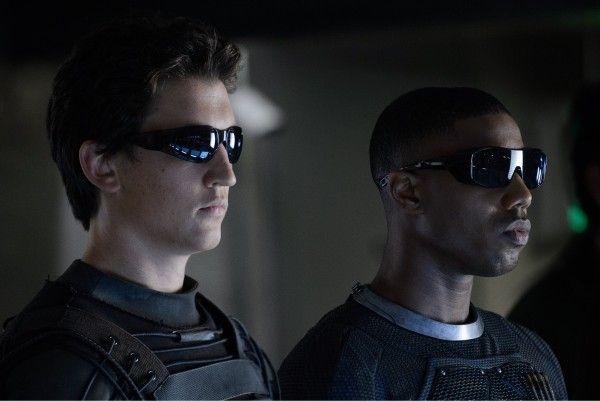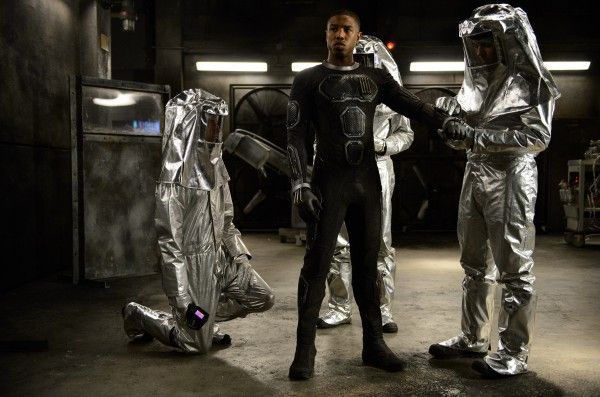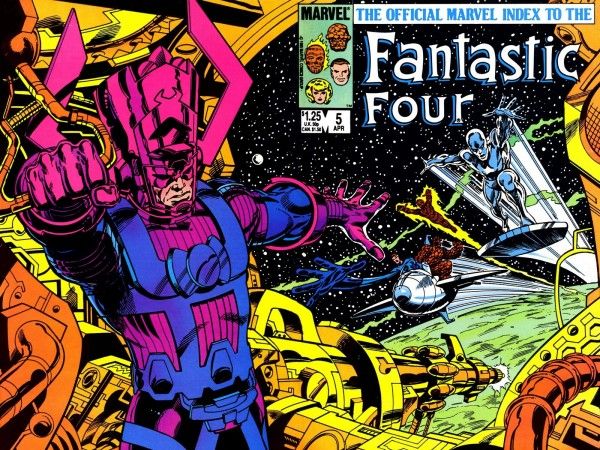While there have been plenty of pleas from folks eager to see the version of Fantastic Four that 20th Century Fox and director Josh Trank originally intended to make—and even shot—that’s highly unlikely to happen. However, the next best thing may have arrived. The earliest incarnation of this new Fantastic Four was screenwriter Jeremy Slater signing on to pen the script. Trank joined the project a little later, but it was Slater who took the first crack at a new iteration of these superheroes for the studio, and he continued to work alongside Trank for a bit once the filmmaker came onboard until Simon Kinberg later came on and did further work on the script with Trank.
But Devin over at Birth.Movies.Death has a full rundown of what Slater’s original script entailed, and it’s strikingly different than the version of Fantastic Four that made it to the screen. Now this isn’t incredibly unusual—few studio blockbusters these days go into production with a first draft, as the script is constantly fine-tuned and reworked all the way up through filming. But it is interesting to see what this initial take on Fantastic Four would’ve entailed. Here are some of the major differences:
-
Slater’s script not only covers the origin story of the Fantastic Four and Doctor Doom, but also Herbie the Robot, the FantastiCar (which was shot but not included in the final movie), and villains Galactus and Mole Man.
- Reed and Ben are friends from a young age, just like in the finished film, but the script emphasizes the fact that Ben acts as Reed’s enforcer, which explains why he wants to bring him along on the ride to the other dimension.
- Reed still goes to the Baxter Building as part of a scholarship, but he meets and falls for Sue Storm. Victor also takes Reed around to parties, but is secretly feeding Reed’s research to spies from his Latverian homeland.
- Sue and Johnny’s father doesn’t factor into the initial script. Instead, the school refuses to allow Reed and Victor to use the “Quantum Gate” so they go it alone at night. Sue and Johnny stay behind and man the portal from Earth while Reed, Victor, and Ben make the trip, with Reed promising Ben he can be the first human to step foot on the other side. Once they've made it, Doom shoves Ben aside and ensures he's the first human to walk on this unknown planet.
- The “Negative Zone”, as it’s called, isn’t an empty wasteland, but is instead an alien civilization in ruins full of skeletons. They stumble upon one living thing: Galactus. The villain shoots Dark Matter out of his hands, enveloping and seemingly killing Doom. The others just barely make the return trip home, but Dark Matter is shot into the Quantum Gate, transforming the quartet.
-
At this point the script hews close to the film, as it hinges on the body horror aspect of the immediate aftermath before jumping ahead four years in time.
- After the time jump, Johnny is a reality TV show star, Sue is still working at the Baxter Building doing research into cancer treatment—and secretly trying to cure Ben—and Ben is a deadly asset for the military. Reed is in hiding in Jakarta, blaming himself for the accident. But he’s also built a Herbie robot and is trying to sell the FantastiCar to Toyota.
- In Latveria, the spies have completed their own Quantum Gate, but it heralds the arrival of a Victor Von Doom made entirely of Dark Matter. He subsequently takes over the country and begins a reign of terror.
- One of the big action sequences is the Fantastic Four battling a giant Moloid in New York City, with humorous beats such as Ben being swallowed by the creature. Dr. Elder gets Moloid juice on him and becomes Mole Man.
- The film concludes with a giant battle in Latveria against the shapeshifting Doom, who ultimately ends up being trapped in the Negative Zone as the Fantastic Four warn the government that Galactus is coming, setting up the sequel.
There’s much more to be found in Devin’s full rundown over at BMD, but clearly this would’ve been one very expensive film. One thing Devin points out is that the tone felt very much in line with a Marvel Studios movie, which is certainly not the direction that Trank and Kinberg took the movie in the end, opting for something darker and more grounded.
Again, it's not unusual for big blockbusters to differ significantly from their original drafts, but Fantastic Four is a special case given the interest surrounding the rocky road to release. All accounts pretty much agree that uncertainty on the part of Fox and Trank contributed to the mixed bag that is the finished movie, but it's fascinating to see where this all started with Slater's draft.




